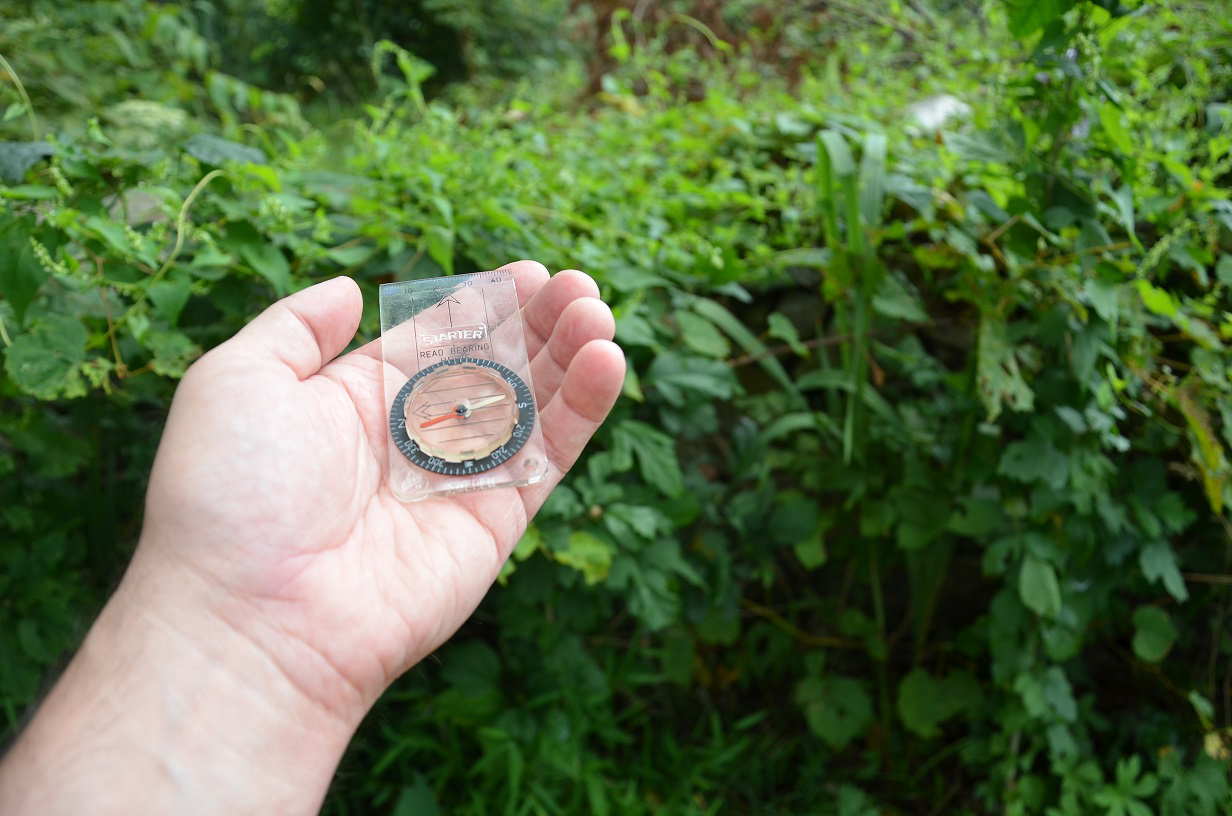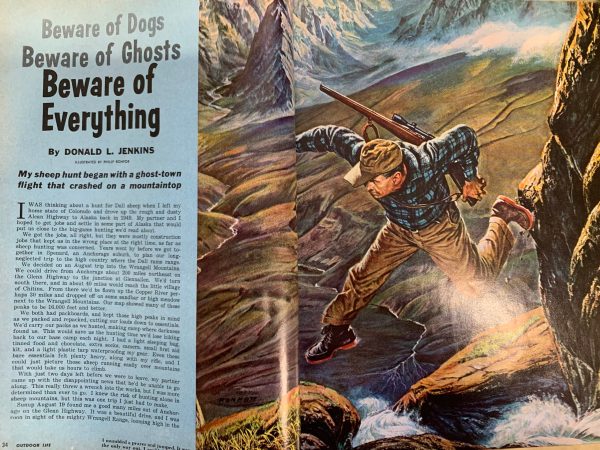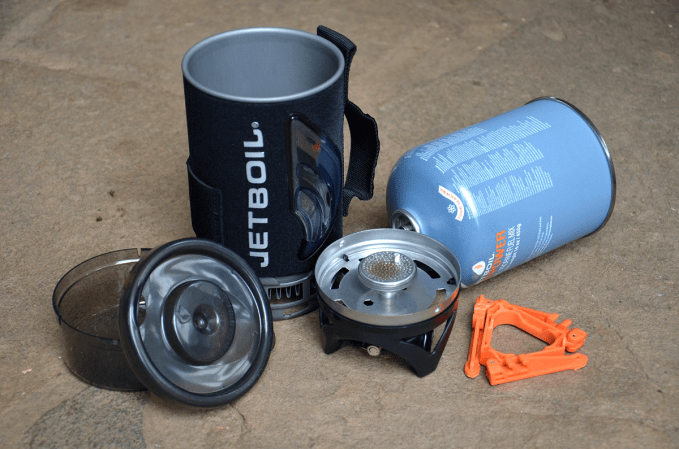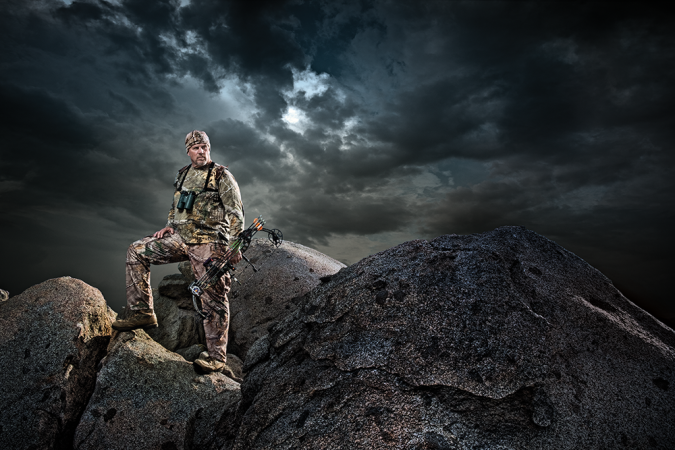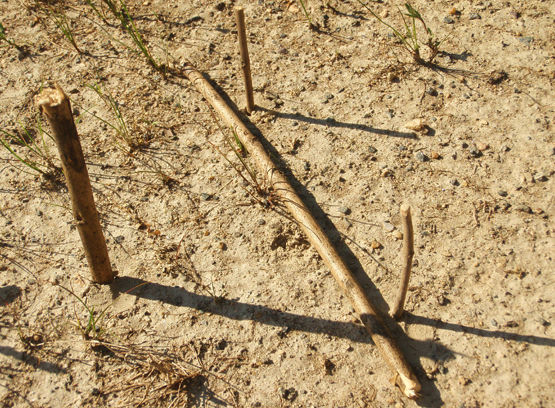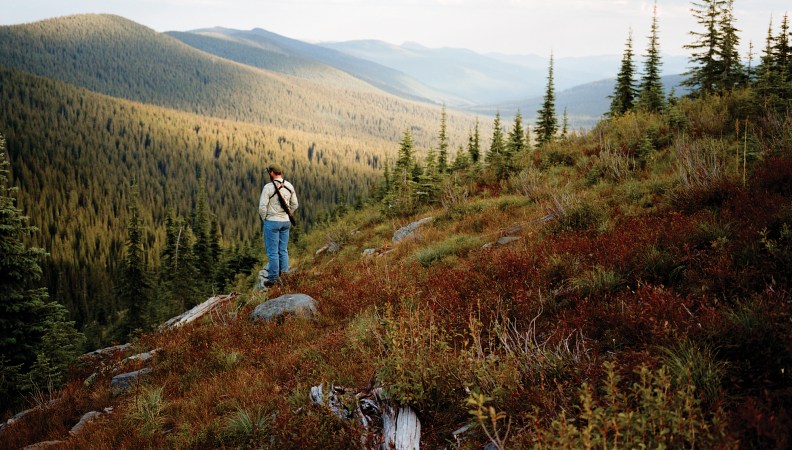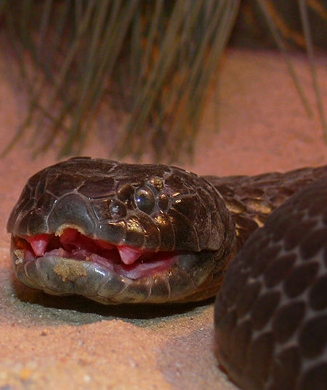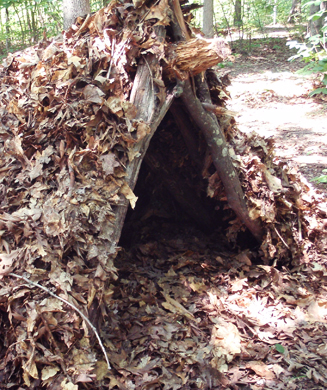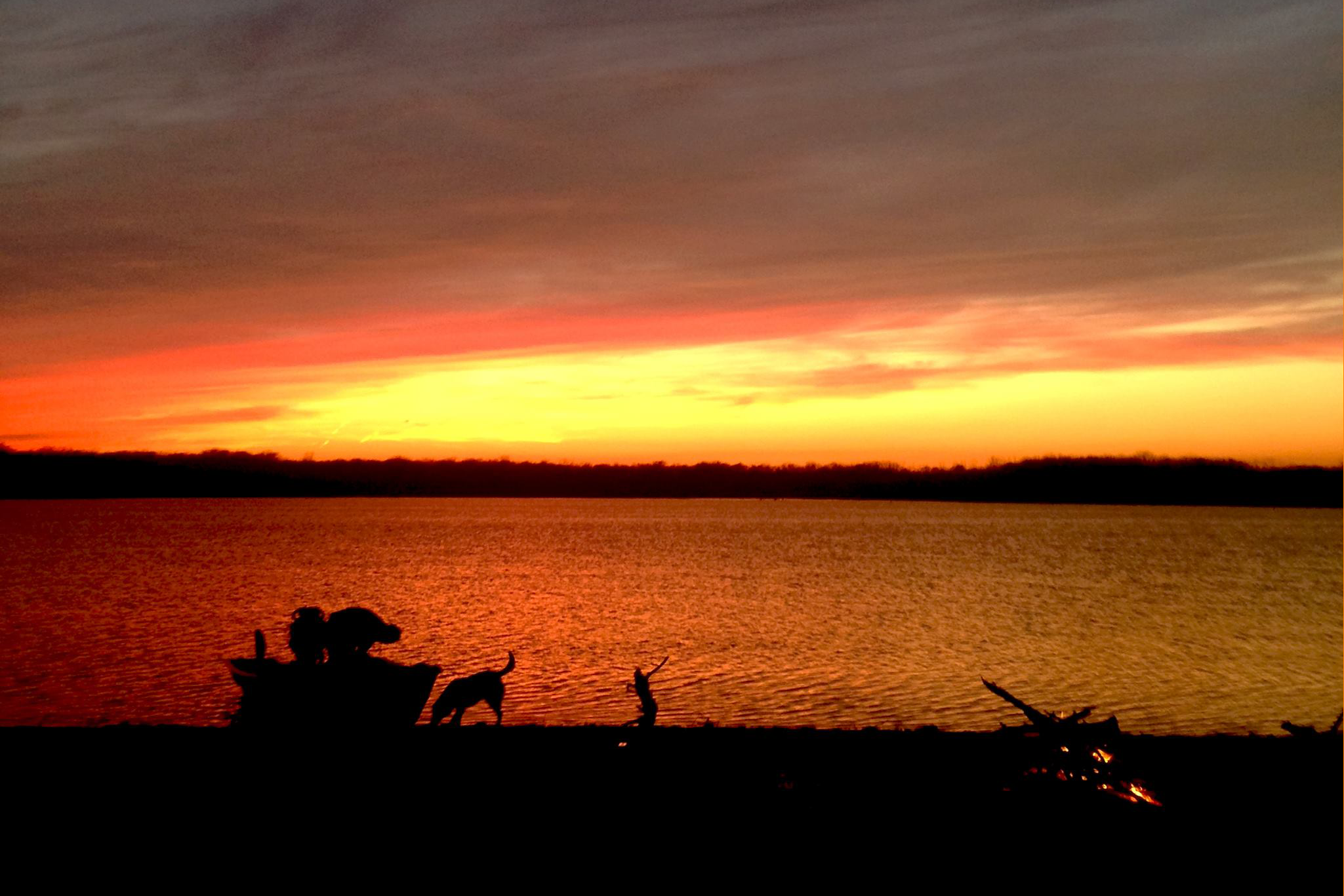
To someone who just spent a long cold night lost in the dark woods, the rising sun is a thing of beauty. It's also a great sign of an easterly direction. As almost every outdoor enthusiast knows, the sun rises in the east and sets in the west. Depending on the time of year and your latitude, the sun may rise closer or further from True East. The actual position of sunset will vary like this also. For those of us in the Northern Hemisphere, the sun rises north of True East, sweeps through the sky in a southerly arc, and sets north of True West. Photograph by Natalie Krebs
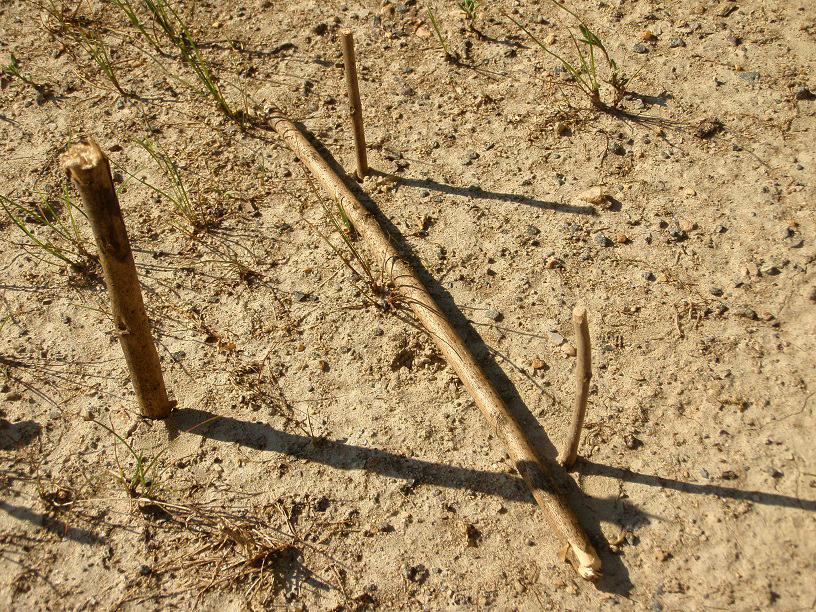
Can't figure out your directions, but you know its mid-day? The sun still gives us enough movement at midday to find our directions, if you stick a few twigs in the ground to make a sun compass. It's easy to make and easy to use a sun compass (aka "shadow stick"). Just stick a twig into soft ground in an open area that is receiving direct sun light. Then stick a smaller twig into the ground or set a small stone at the point where the first stick’s shadow ends on the ground. The sun moves east to west at about 15 degrees per hour. Wait 2-3 hours, give or take a few minutes if you are away on a survival project, and make another mark to record the tip of the shadow from the shadow stick. Lay a stick on the ground or draw a line between the marks from the shadow tips; and you have established a rough East-West line. Add small stones or more twigs each hour of the day and you’ll have a sun dial to tell time (and you still have your compass).
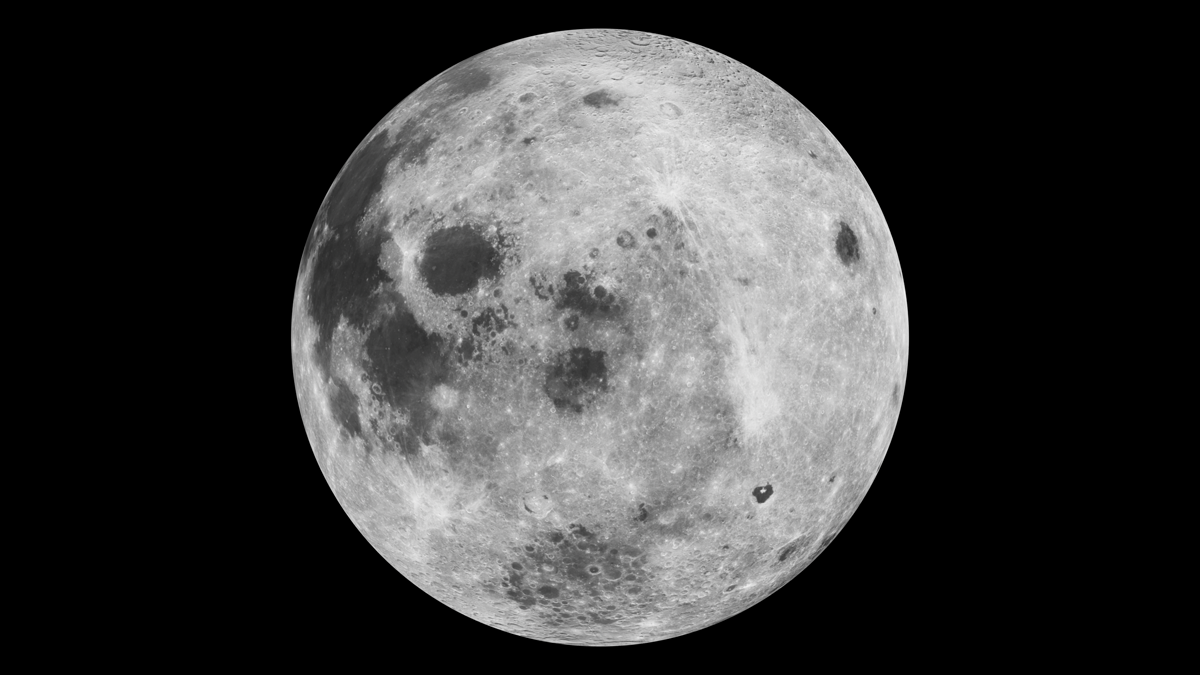
As the sun moves from east to west, so does the moon. Due to the moon running on a different schedule than the sun, it may not be rising or setting at a convenient time to assist your navigational needs, but at least it follows a similar path as the sun. Photograph via Wikimedia
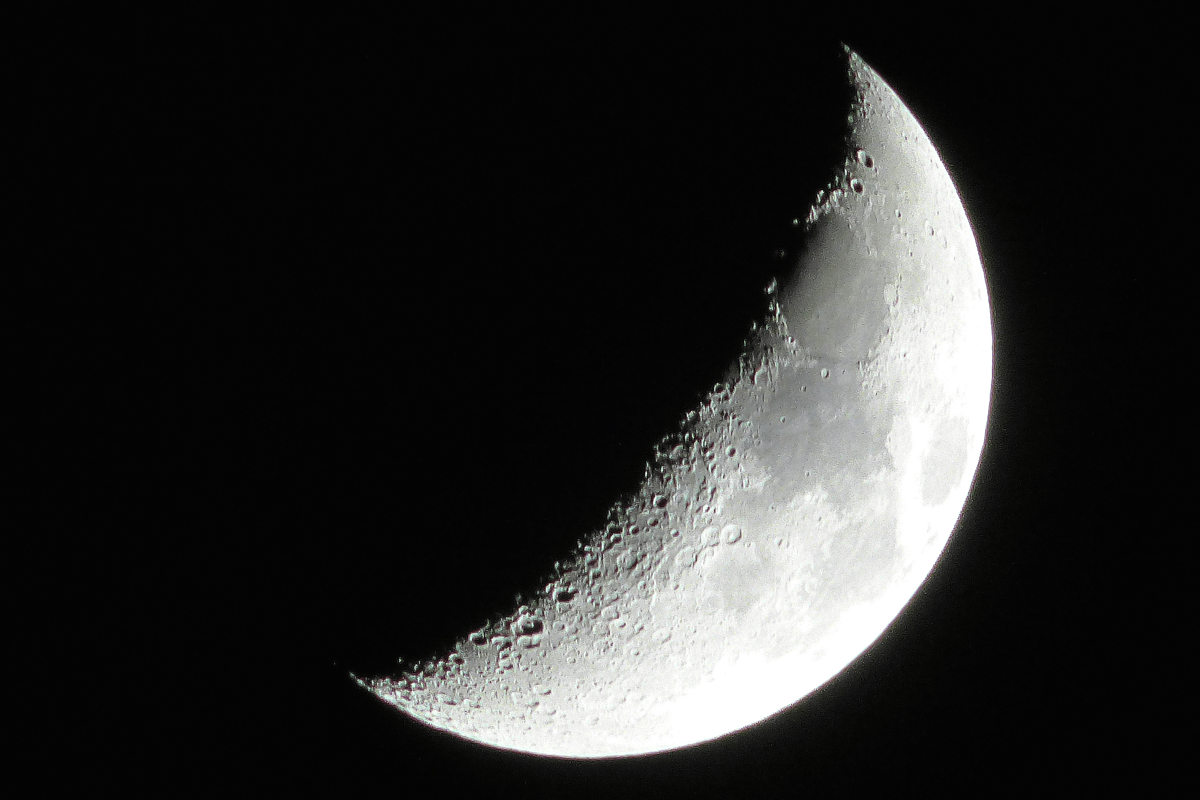
The crescent moon is a shape recognized around the world, but few people realize when the "horns" of the moon are telling us. When the crescent moon is in the sky, use a straight stick (or just your imagination) to make a line that touches each tip of the "horns" and extends down to the horizon. This spot on the horizon will be roughly south, when this trick is done in the northern hemisphere. If you're trying this below the equator, the line passing by the horns and extending to the ground will show a rough northerly position. This trick also works when the moon is in any other phase, except full moon. See an illustration here. Photograph via Wikimedia
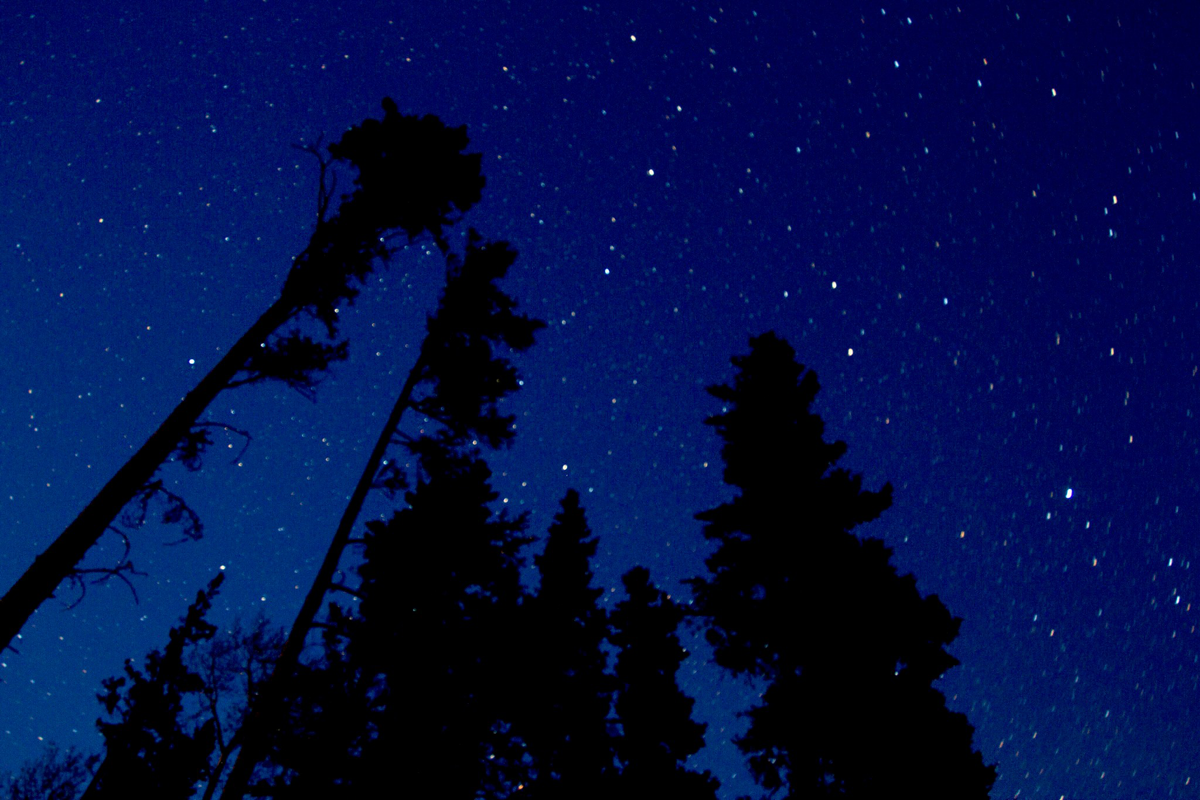
Most folks can find the Big Dipper (Ursa Major) in the night sky. And if that was all you could find, it would give you a general idea of north. But for more precise way finding, follow the two stars on the side edge of the dipper's cup until you hit the dim star "next door". This is Polaris, the North Star. It gives you a very accurate bearing toward True North. If the Big Dipper doesn't happen to be visible at your location or time of year, the "W" shaped constellation of Cassiopeia can help. It is on the other side of Polaris from the Big Dipper. It's also possible to find Polaris by finding the Little Dipper (Ursa Minor). Polaris is the final star in the dipper's handle. See an illustration here. Photograph by Natalie Krebs
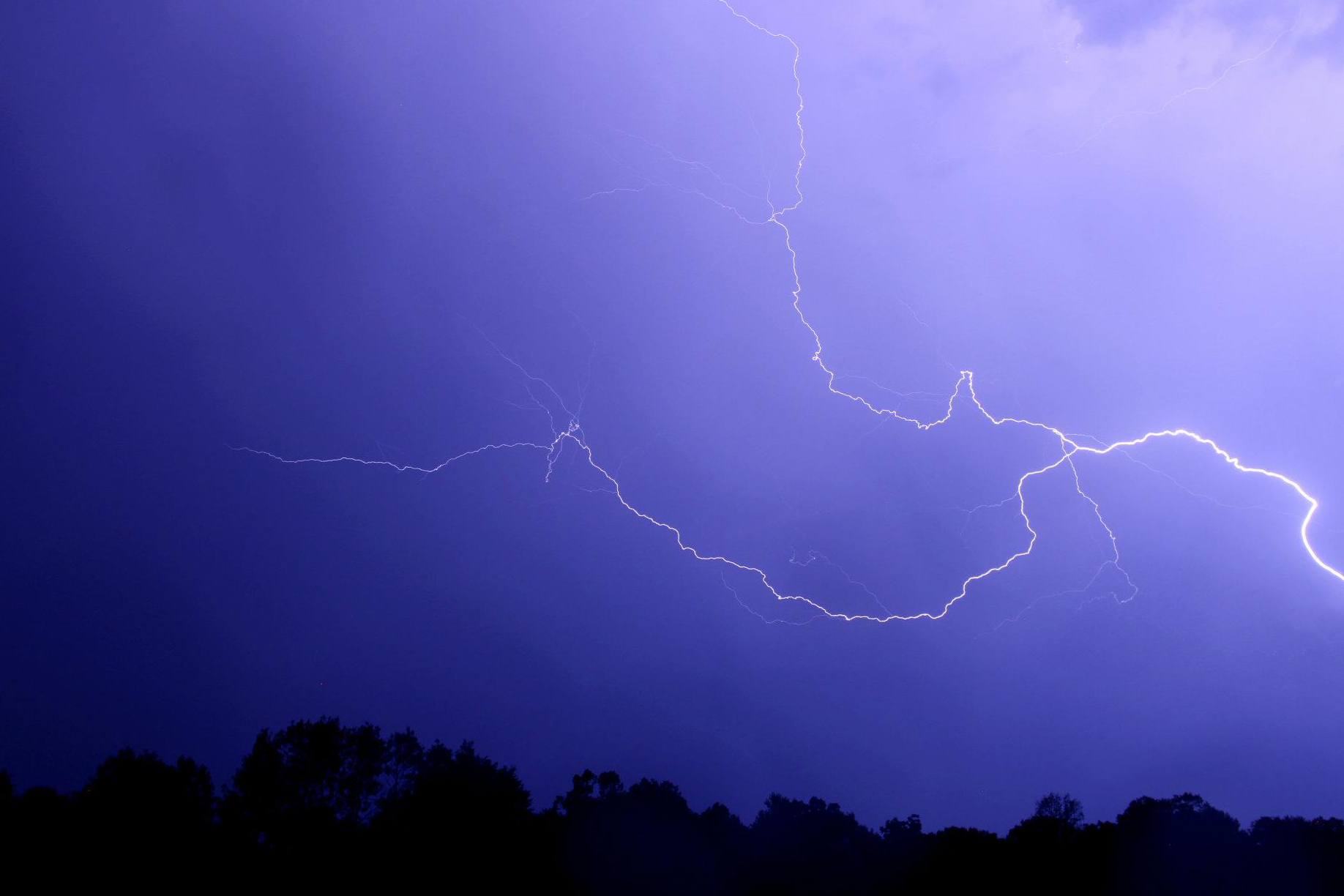
Prevailing winds and storm patterns can tell us a lot as we try to navigate. Even though the wind can blow from any direction it likes, the storms and most of the wind tend to blow from the west toward the east in the northern hemisphere. When I see black storm clouds churning on the horizon in my area, it's always to my west. And wind swept areas often have trees, shrubs and other vegetation leaning away from the storms – giving you a permanent indicator of storm patterns. Photograph by Natalie Krebs
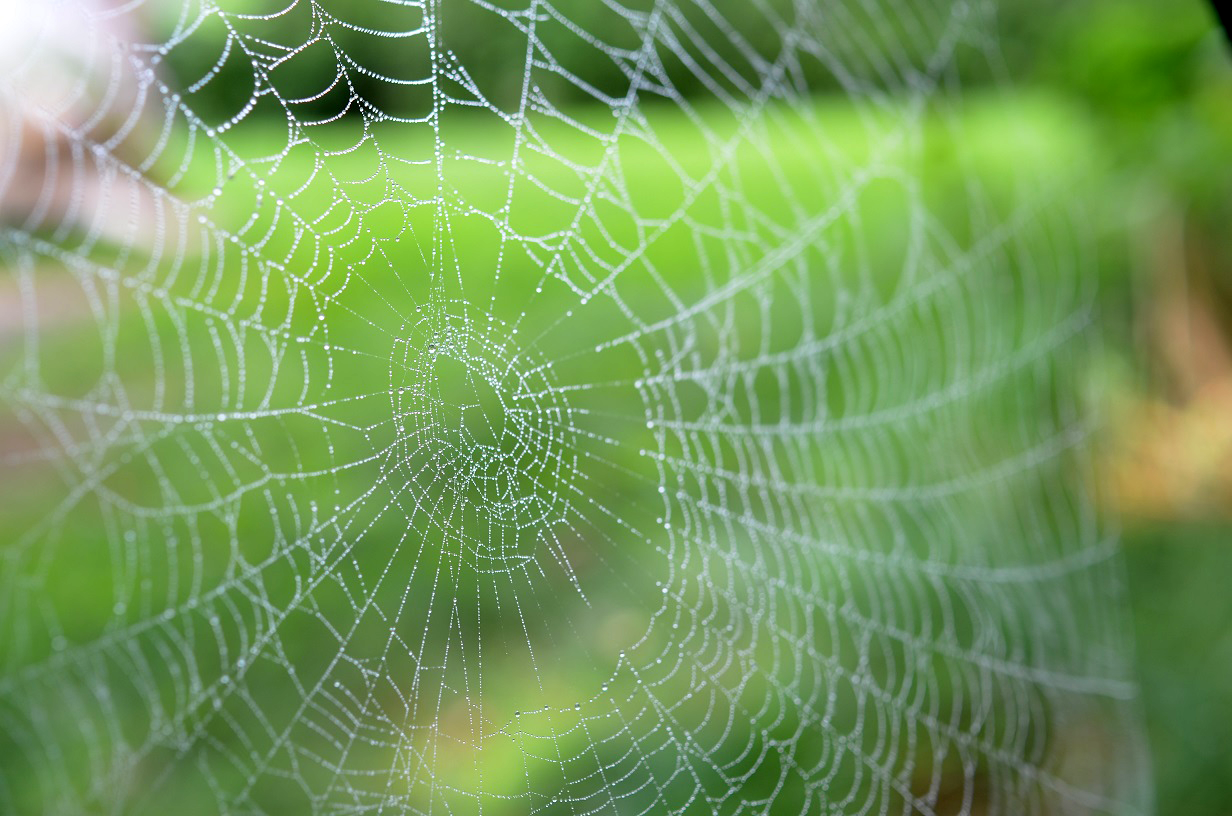
We all know how the geese fly south for the winter and north for the summer. The natural navigation skills of these birds are truly remarkable. But geese aren't the only animals that can tell direction. Some spider species build their webs on the leeward side of trees. Since the wind normally blows from the same direction, this can help you establish your cardinal points.
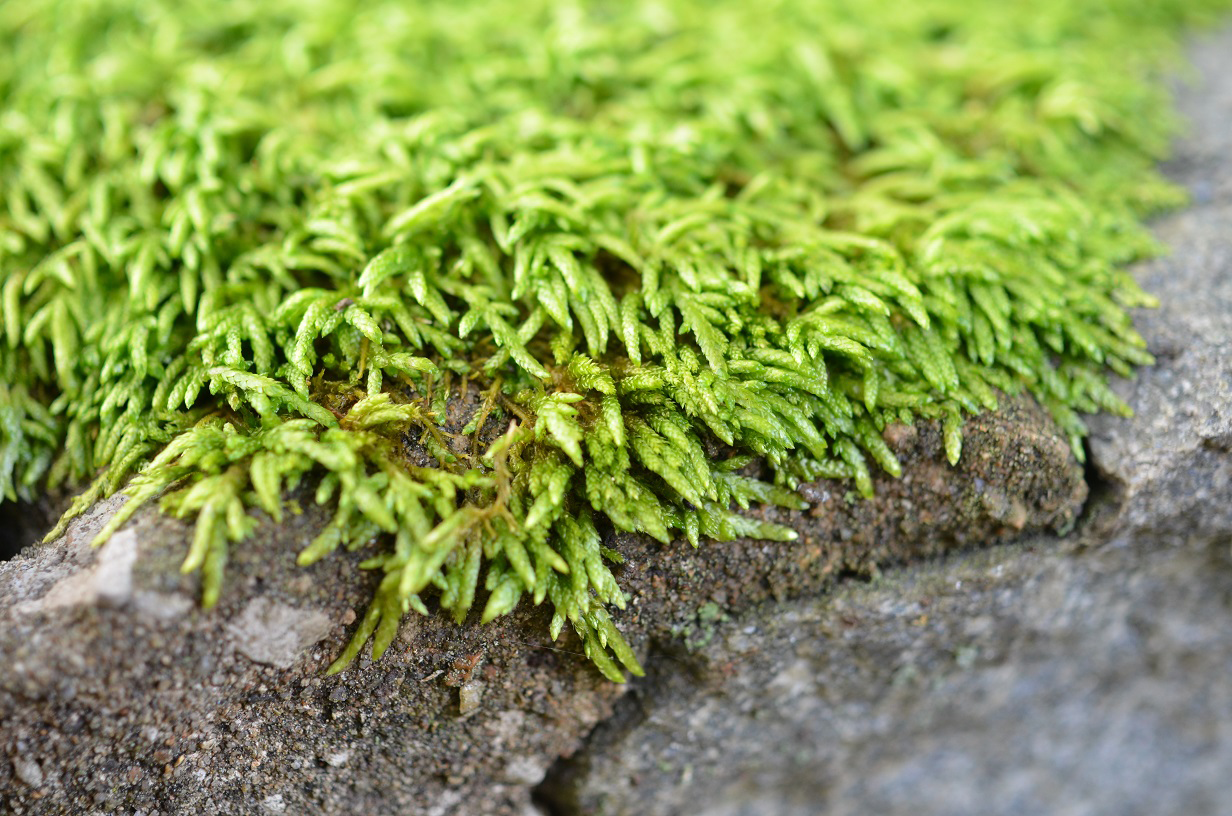
Does the moss always grow on the north side of the tree? I'm sure this might be accurate once in a while, but also remember that a broken clock is still right twice each day. Depending on the climate, latitude, moss species and a host of other factors – that moss can grow anywhere it likes. In fact, I often find more moss growing on the south side of the trees here in the mid-Atlantic. It's sunny on the south side of the trees, and the local moss species prefer more light, especially in thicker forests. But in that same patch of woods, I also find plenty of cases where the moss is on other sides – like east, north, and west. So if I believed the tree moss was telling me which way to go, I could be heading completely in the wrong direction in my area. If you find, however, that the moss is uniformly growing on the north (or south) side of the trees in your neck of the woods, then it could help you navigate in your locale. Just remember that most plants grow towards the light, and it can be usually seen in the growth of trees, crops, flowers and yes, even moss.
